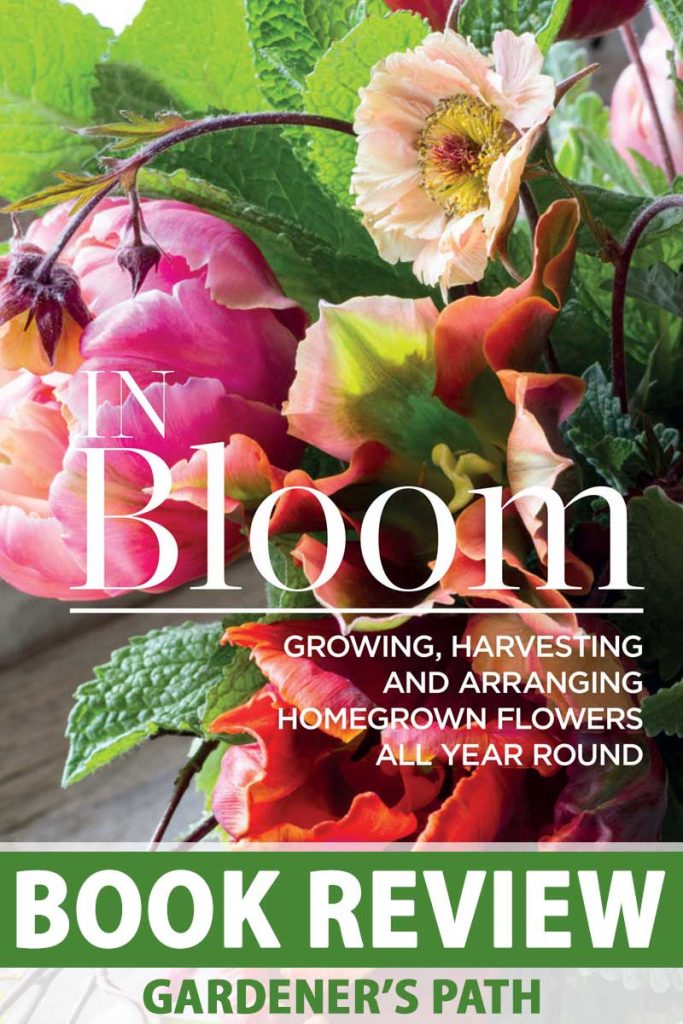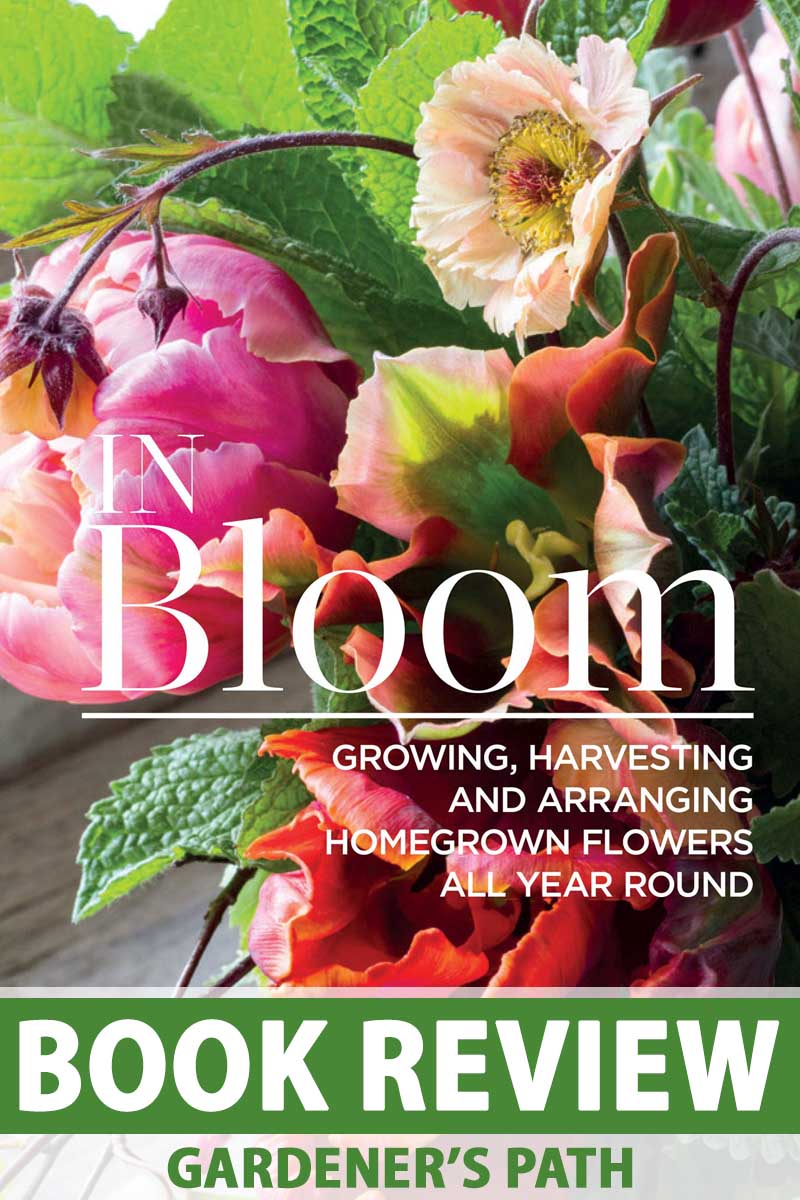
We link to vendors to help you find relevant products. If you buy from one of our links, we may earn a commission.
If you’ve ever wanted to devote all or part of your garden to growing flowers and foliage to arrange as a florist would, you’ll find all you need to know in Clare Nolan’s book, “In Bloom: Growing, Harvesting, and Arranging Homegrown Flowers All Year Round,” available via Amazon.
Read on for a thorough review of this gardening book that does way more than look nice on the coffee table!
First Impressions
While we’ve been taught not to judge a book by its cover, the lush blossoms on this one paint an accurate picture of what’s in store.
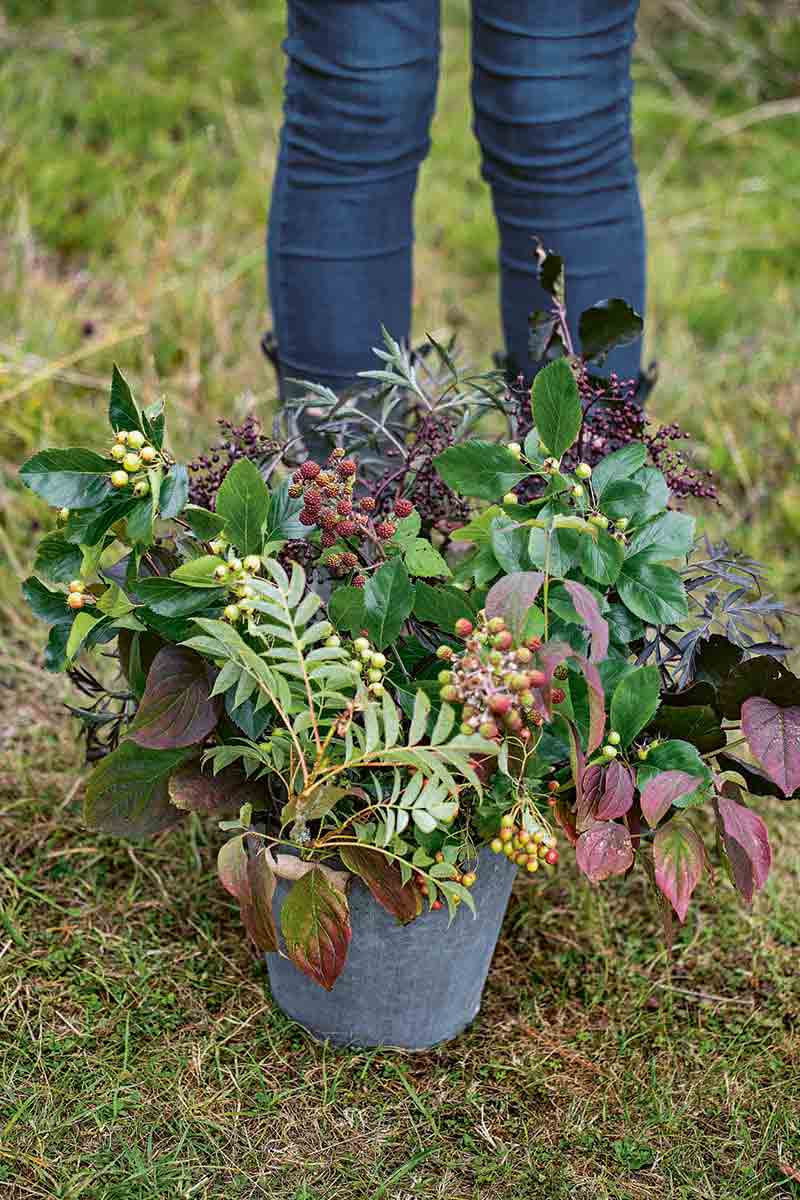
Nolan spent five years photographing the flowers and foliage in her own gardens to accompany the wealth of knowledge she imparts.
And when I randomly flipped to the middle, as I generally do on my first glance, I was pleased to find that the photos are generously interspersed with bites of information in a most appealing way.
Cover to Cover
“In Bloom” is a UK publication that measures approximately 7 by 9 inches and has 288 matte-finish pages. It is available in hardcover and paperback, as well as for Kindle.
The flowers and foliage recommended are suitable for temperate growing zones in both the UK and the US.

In Bloom, available via Amazon
The main headings covered throughout are:
- Getting Started
- Annuals & Biennials
- Bulbs
- Perennials, Shrubs & Trees
- Foliage & Fillers
- Harvesting & Arranging
Additional sections include an introduction, resource list, index, and acknowledgements.
Meet the Author
Clare Nolan is an internationally renowned interior stylist and lifestyle writer with extensive freelance design consulting experience.
Her work has appeared in various UK publications including Saturday Telegraph Magazine, Sunday Times Magazine, Style, and House & Garden.
She is the lifestyle editor of Mail on Sunday’s YOU magazine and is the author of Making a House Your Home.

Nolan describes herself as a “flower nerd” and revels in her cottage gardens in the English countryside.
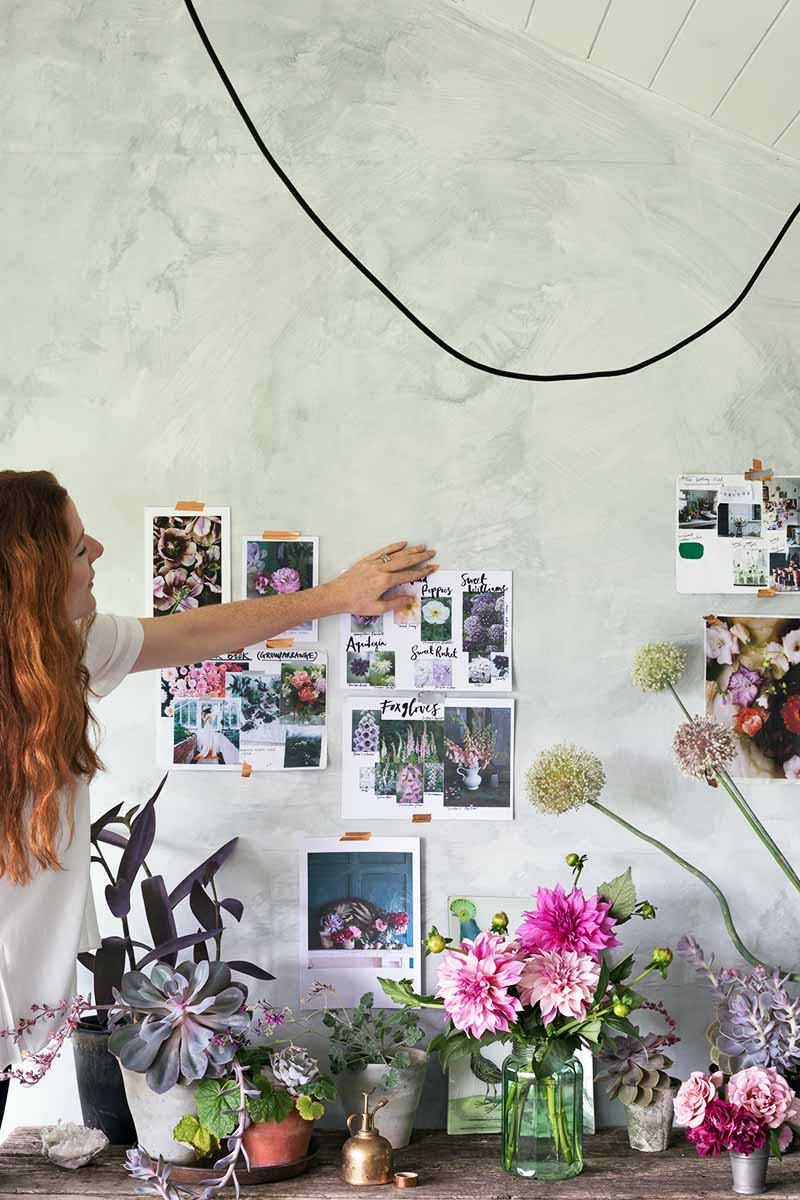
She believes that gardening and designing should be uncomplicated and enjoyable, and that achieving the “perfectly imperfect” is a worthy goal. Her motto, “give it a go,” informs her actions both in the garden and at her design workbench.
Breaking it Down
To understand Nolan’s approach to the processes of cultivation and design, I recommend that you read the whole book through, with highlighter in hand.
It’s not your usual garden guide, nor a formulaic design tutorial. Instead, it’s an organic collection that reads like a letter from a friend.
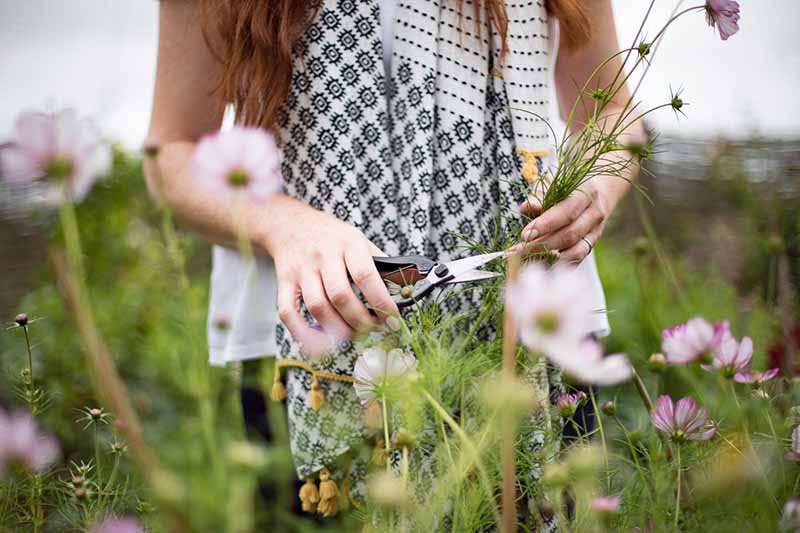
In her introduction, the author says, “Flowers are an emotional marker through our lives…” and speaks of the joy of honoring loved ones with “garden-gathered blooms.”
Throughout her book, Nolan inspires readers with the beauty of her own garden gems, and instills confidence with her tips for success.
She asks readers to dispense with notions of perfection and to adopt an acceptance of the “perfectly imperfect” nature of the process from start to finish.
Let’s look at the highlights of each section.
1. Getting Started
Nolan opens by instructing readers on choosing good cutting plants that bloom in succession, maximize the use of garden space, and provide an ever-ready palette of color, texture, and shape.
These are the “ingredients” that supply the “heroes,” “supporting acts,” “fillers,” “foliage,” and “sidekicks” that comprise a floral arrangement. She says, “… the best approach is to trust your instinct and go for the colors and combinations that you love.”
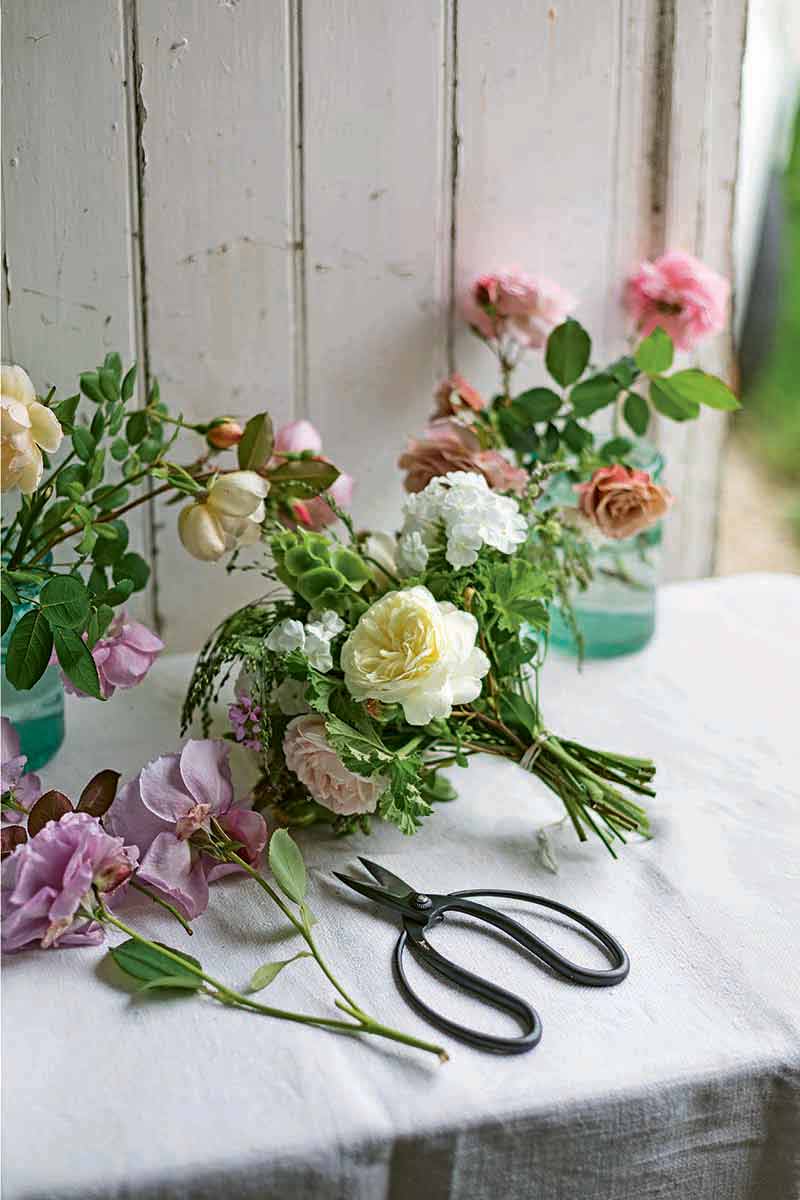
Topics include realistic scaling, economical sourcing, and recommended garden tools. There are plant spacing diagrams inspired by Washington-based flower grower Erin Benzakein that reflect viewing plants as crops, not “garden displays.”
A clever “Ingredients’ Calendar” matches seasons with plants and their roles in arrangements, and “The flower grower’s year” gives readers an idea of the activities involved in maintaining a garden overflowing with arrangeable bounty.
2. Annuals and Biennials
The mechanics of planting are discussed in this informative section.
Useful tips include sowing seed in lengths of rain gutter, and making your own high-potassium feed.
Flower habits are defined as “cut-and-come-agains,” “one-hit wonders,” and “multiple bloomers.” Readers are encouraged to plant densely to optimize space
Nolan briefly describes the “magic” of collecting and saving seed from homegrown flowers before jumping into an eclectic collection of blooms that perform exceptionally well in the cutting garden.

Within each floral entry are subsections titled “Favorites,” “In the Garden,” and “In the Vase,” that detail varieties, growing tips, and cutting practices for each type of flower. These subsections are employed throughout the book.
“The floral fillers” follows this collection, and suggests smaller blooms that “… pad things out, soften, and add a little bit of texture.” Noteworthy varieties of each as well as planting instructions are included.
A Note: I feel I must caution readers about cornflower, “a rare sight growing wild in the fields,” in the author’s region. It is considered invasive in numerous states in the US.
This extensive section winds up with creative tips for how and when to plant three half-hardy flowering vines that “bring a sense of movement to an arrangement.”
3. Bulbs
Did you know that fritillaries should be sown sideways? Or that you should plant snowdrop bulbs right after they flower?
In this section, the author recommends an assortment of flowering bulbs for the cutting garden that range from bold heroes to dainty fillers and sidekicks.
Ruffled spring parrot tulips and summer dahlias the size of dinner plates are awaiting your discovery, as are instructions for forcing bulbs for late winter potted arrangements.
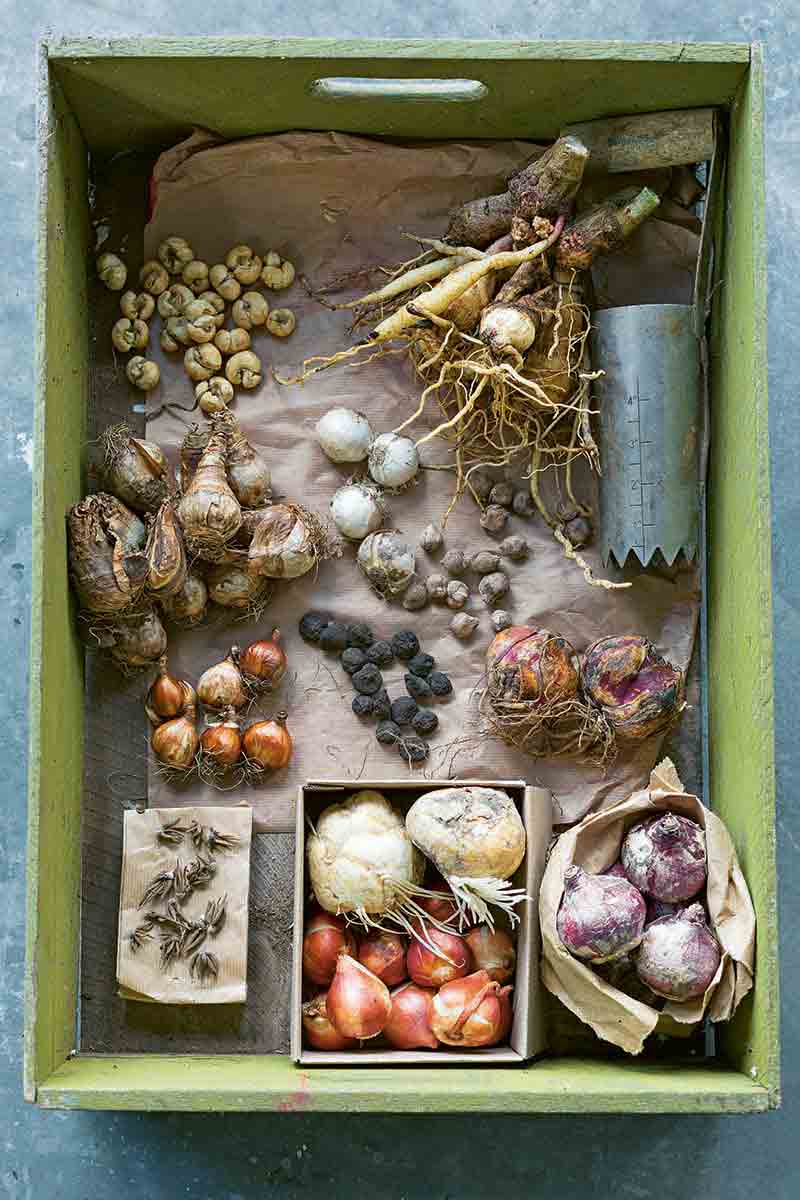
Nolan shares her expertise about which bulbs to leave in the ground, which to lift out and store for the winter, and why. She also discusses soaking and pre-sprouting techniques for select corm flowers.
There’s an informative section on the economical propagation of plants to increase garden yields, as well as instructions for overplanting to achieve a succession of blooms.
4. Perennials, Shrubs & Trees
While annuals and bulbs provide an ample supply of design material, it’s only when we add perennials, shrubs, and trees that compositions become truly magical.
Robust blossoms of large hero flowers such as roses, peonies, and hydrangeas make bold statements.
Nolan stresses that cultivation for harvest requires a density that is much greater than that of a display garden.
She asks readers to examine their existing landscapes with a florist’s eye, suggesting, “anything is fair game,” so “snip a stem and try it out.”
Nolan continues to give us the benefit of her experience by debunking an “old wives’ tale” about moving peonies.
She shares tips for expertly pruning lilacs and forcing branches to bloom indoors, and extols the virtues of winter-blooming hellebores.
Some fun sections are “Spikes & spires,” “Arches & curves,” and “Flowering climbers,” which detail exquisite perennials whose shapes add height and movement to arrangements.
Delicate annual selections include spiky basil and sage blossoms. Flowering branches and shrubs take compositions to new heights, and look extraordinary as stand-alones.
And finally, climbing vines laden with blossoms, and rarely seen in professional arrangements, offer even more opportunities to be creative.
5. Foliage & Fillers
Nolan refers to gap-filling materials as the “backbone” of mixed arrangements, and includes an exciting mix of plants you may never have considered for arranging.
Annuals like borage offer bulk accented by tiny, star-like blooms. Perennial coral bells sport a myriad of earth-toned leaves, while scented geranium adds a “layer of fragrance” while it “pads out” the spaces between “heroes” and “supporting acts.”
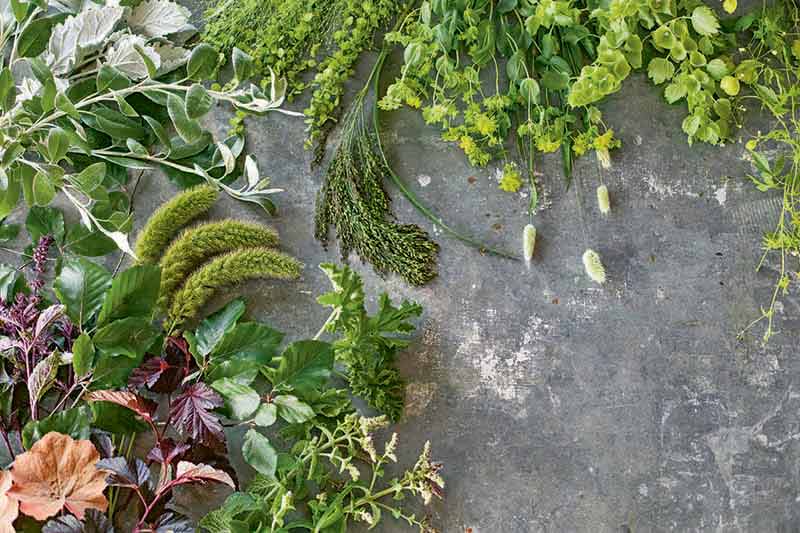
Mints are introduced are fodder for filler, as well as the cascading strands of evergreens, and foliage and branches that may already adorn your landscape.
Wispy grasses and dripping catkins lend appealing texture and movement, while rose hips and berries add splotches of seasonal color and interest.
The chapter concludes with tips for foraging for seasonal items to spice up your homegrown design supply.
6. Harvesting & Arranging
Nolan wraps up her labor of love with “Practical Tricks” for harvesting and extending the vase life of flowers.
There’s a useful section on conditioning cut items to increase longevity, as well as tips for rejuvenating wilted blooms. A list of recommended arranging tools follows.
“The Mechanics of an Arrangement” tells how to cut, pack, and secure stems; hand tie arrangements; and use stems as an armature for support.
Useful supplies like tape, frogs, wire, and water tubes are discussed.
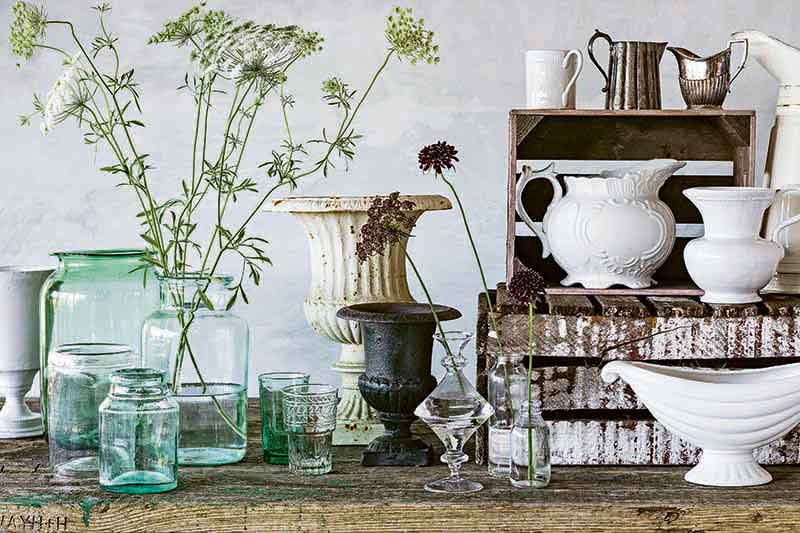
A section on vase selection precedes instructions for arrangements like “pick & plonk” and a “no-tie posy.” With items like pickle jars, chicken wire, and assorted bud vases, Nolan creates stylish displays.
Wreaths, garlands, still lifes, and gifts bring “In Bloom” to a close on a creative and inspirational note.
Resources
This section is of greatest use to readers in the UK and Europe; however, some information is useful to those in the US as well. It consists of websites to source bulbs, plants, seeds, tools, supplies, and even greenhouses.
There is also a list of the author’s favorite Instagram accounts for inspiration.
Index
Here you’ll find an alphabetical list of topics. Illustrations appear in italics. However, not all entries are cross-referenced.
For example, to find “hardening-off,” you’ll have to look under “seedlings.”
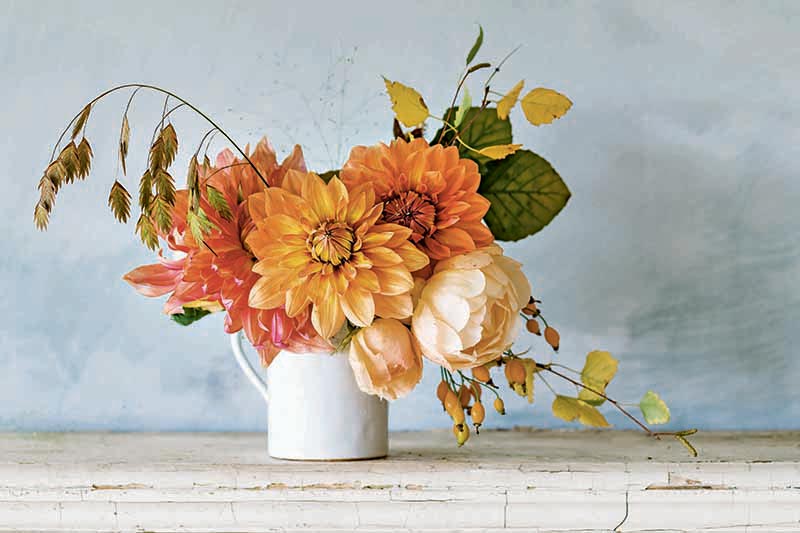
Another example is “conditioning.” References are found on pages 226-229. There’s also a sub-listing for “flower branches (conditioning of)” on page 189.
However, if you want to find that little boxed item you remember reading about how to condition woody cuts, you’ll have to look under “trees” to learn that it’s on page 209.
That said, a glance through the listing of chapters at the beginning of the book should jog your memory.
Acknowledgements
I always like to read this section. It gives me a little glimpse into the author’s heart and home life. In this case, it’s fun to picture Nolan’s husband patiently shaking his head as his “lawn gradually shrinks and is replaced by flower beds and meadow…”
As Nolan says, this book was truly “an enormous personal undertaking.”
Once you are familiar with its format and scope, you can zero in on the topics most pertinent to you. Some readers may want to start a cutting garden from scratch, while others may choose to add suggested flowers to existing beds and borders.

I must mention that as I read, I found typos. However, rather than detracting from the material, they seemed to quaintly underscore the author’s “perfectly imperfect” approach.
In addition, sometimes knowledge is presumed. For example, there’s a reference to Ikebana, a Japanese style of flower arranging.
There’s also a mention of bone meal, an organic fertilizer. Neither is defined, nor do they appear in the index. Does this diminish the text? Not in my opinion.
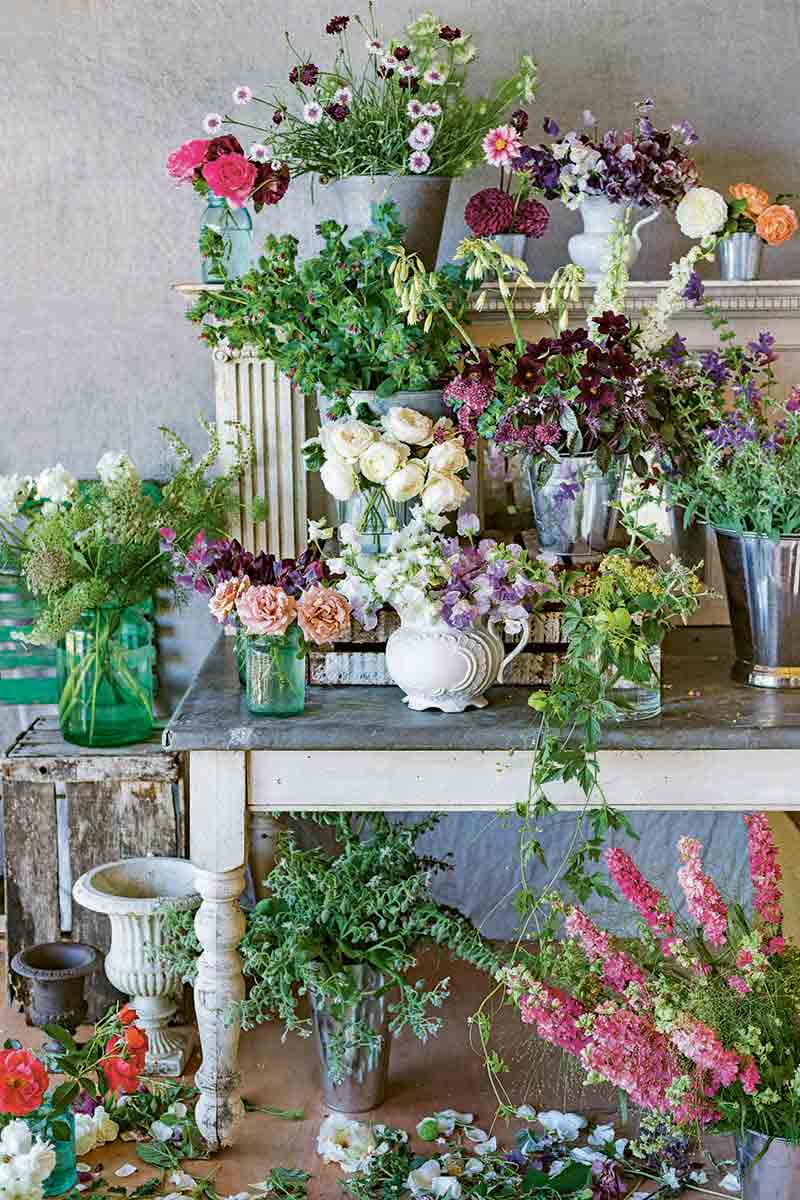
And while Nolan highly recommends applying mycorrhizal fungi to a rose’s developing roots, followed by a seaweed feed after the flowers appear, you’ll have to look both up elsewhere to acquaint yourself with these amendments.
You’re Invited
As a gardener and floral designer, I appreciate the magnitude of work involved not only in growing and arranging floral material, but in photographically documenting the processes to share with others who are eager to learn.
And despite having gardens prone to slugs, a problem to which I readily relate, Nolan cultivates armloads of gorgeous blossoms, proving it can be done!
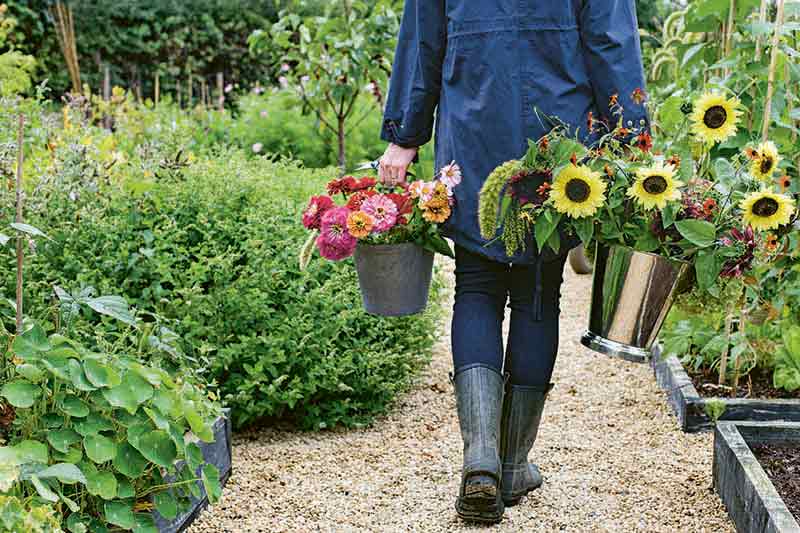
Her tips for every stage from seed to vase, plus detailed garden plans, are all that’s needed to grow an abundance of material for a steady supply of florist-quality arrangements.
“In Bloom” is a delightful invitation to join Clare Nolan at her country cottage, where you’ll learn to grow the cutting gardens of your dreams.
Will you accept? Get yourself a copy of this wonderful book via Amazon, and get growing!
If you enjoyed this article, you may also like:
- Alstroemeria: A Cutting Garden Essential
- DIY Wintertime Decorative Arrangement: It’s a Handful of Greens Away!
- How to Make a Fresh and Festive Holiday Sparkle Centerpiece
- Put Your Green Thumb to the Test: Arranging Foliage from Your Garden
© Ask the Experts, LLC. ALL RIGHTS RESERVED. See our TOS for more details. Photos and cover image reprinted with permission, courtesy of CompanionHouse Books and Clare Nolan. A review copy of this book was provided by the publisher.
